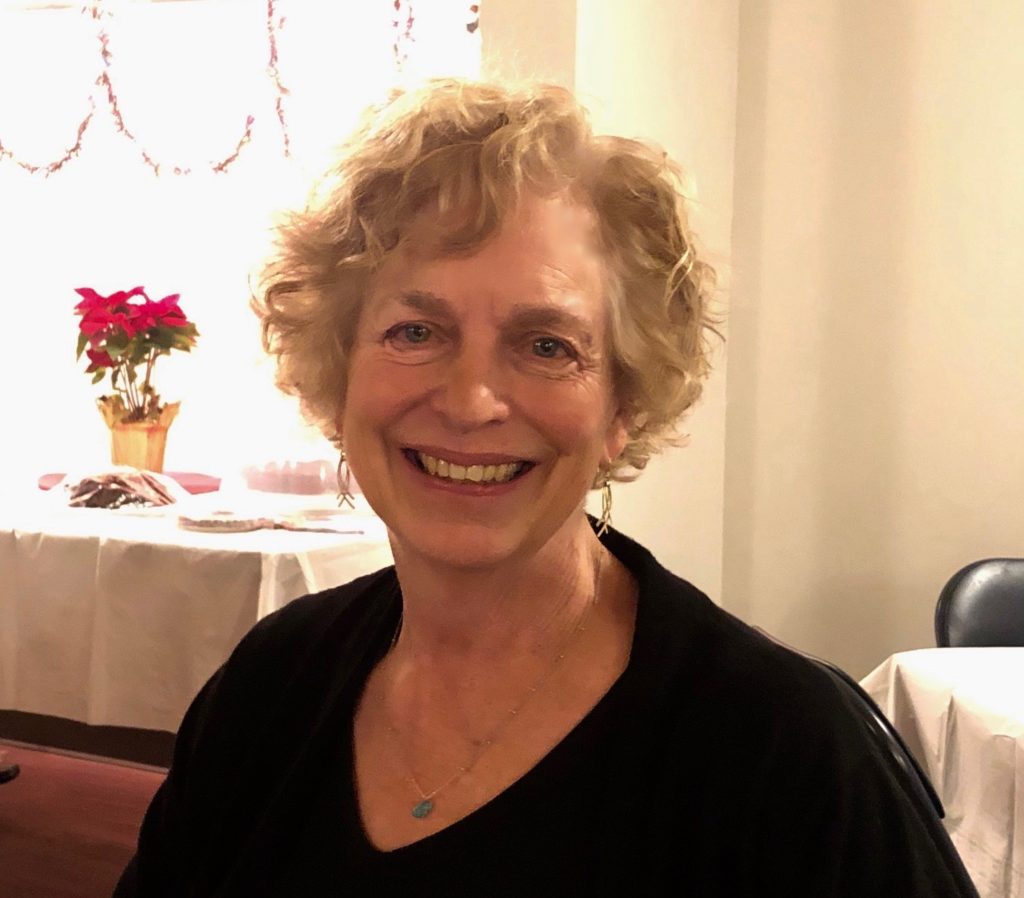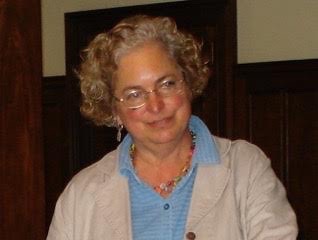
My diagnosis of Cushing’s Disease came in May of 2012, at the age of 57. I believe, however, that I had Cushing’s for years, even decades, before my diagnosis. Starting in my 30s, I was routinely covered with bruises from minor bumps. Neither my primary care physician nor my hematologist had an explanation for this. I had a couple of serious hematomas, and I had an infection in my hand that required my rings being cut off because of sudden swelling.
In the fall of 2009, my hands became very swollen for no apparent reason. I remember the alarmed look on my primary care physician’s face when she saw my hands; she didn’t have a clue what was going on. I became very tired and sometimes nearly fell asleep while standing in line at the grocery store. I went to a rheumatologist and was told that I had rheumatoid arthritis and was promptly put on prednisone. That diagnosis got changed to polymyositis (a muscle disease that causes inflammation), and I was kept on prednisone. So far, I had only been seen at the University of Vermont Medical Center. I decided to go to Brigham and Women’s Hospital in Boston, one of the Harvard Medical School hospitals, where I saw a team of doctors who spent the whole morning with me doing tests, ultrasounds and interviews. A medical student asked if I had recently travelled to a foreign country, and had other investigative questions. They later sent me a letter declaring that I had dermatomyositis, a rare, inflammatory autoimmune disease that was best treated with prednisone.
In an attempt to get treatment for myositis, I looked up experts in the field and started going to a rheumatologist at Dartmouth Medical Center in New Hampshire, in addition to seeing doctors at the University of Vermont. The diagnosis morphed into “We don’t really know what you have. You want a name for it, but it doesn’t matter because the treatment is the same” (more steroids). Methotrexate and azathioprine were added to my daily medications (both immunosuppressives).
For three more years, I continued to have a bizarre series of symptoms and ailments. Each time, specialists claimed a diagnosis in their field: for shortness of breath, the pulmonologist said I had asthma and gave me steroid inhalers. For incontinence, the urologist said I had weak pelvic muscles and recommended physical therapy. For insomnia, the neurologist gave me anti-depressants, which I took for three days until I thought I was going crazy and I stopped. For hypertension, I started taking Lisinopril. Brain MRIs and other tests eliminated rheumatoid arthritis, multiple sclerosis, and lupus. To figure out my muscle weakness, I had a muscle biopsy and a series of tests where they give you specifically-placed electric shocks and monitor muscle reactions. I was told that my tissues were abnormal, and it stood that I had some kind of muscle disease.
I was exercising in the hopes of maintaining my muscles, but it was like pouring water into a sieve. I cried my way through yoga classes because I had lost my ability to balance my body. I couldn’t stand on one foot, I couldn’t jump and I couldn’t run. I fell down countless times, just walking along; I was particularly vulnerable on uneven terrain. I broke my leg in one fall. In another, I broke three ribs, got pneumonia, had internal bleeding and contracted C-difficile infection. I fell on a sidewalk in Atlanta, slicing my face and breaking my cheek bone. I flew home the next day and burst an ear drum because of the swelling in my face. My skin had become as thin as that of someone in their 90s. I opened doors into my legs, peeling off the little bit of skin that was there; I asked doctors not to stitch my wounds because there wasn’t enough skin. Despite my claim, an ER doctor insisted on suturing a cut with 15 stitches, and within a few days, they all fell out. I carried rolls of gauze with me everywhere because I was constantly cutting my arms and I couldn’t use band aids because they would pull the skin off. I had bursitis in my elbows. I had cysts on my feet that would appear suddenly and then go away; one determined surgeon removed one on sight and was baffled by the biopsy because they couldn’t identify what it was. My face was red and round. I gained 30 pounds. The bones in my right hip “died”; I was on crutches for five months until I had a hip replacement in 2010. The surgeon was puzzled by the gelatinous state of the “bone.” I was told I had “vocal cord dysfunction” and was sent to a speech therapist, who was perplexed at both the diagnosis and what she might do to help me. I was experiencing some classic cognitive issues from elevated cortisol levels, such as foggy brain, short term memory loss, fatigue, anxiety, depression, nausea, trouble sleeping and lack of energy.
My doctor at Dartmouth insisted that I was “stable” and told me to continue taking prednisone, methotrexate and azathioprine. When I described my symptoms, I was told that they were a result of taking steroids. I said that I had these symptoms before I started taking steroids, but I wasn’t heard. One healthcare professional told me my shortness of breath meant that I was getting old. (I was 55.) I knew that I was seriously ill and I needed a clear diagnosis.
My dermatologist refused to give up on me. She challenged my Dartmouth rheumatologist for not considering the possibility that I might have Cushing’s Disease, not Cushing’s syndrome from taking steroids. My neurologist at UVM started questioning the diagnosis of an autoimmune disease. He had done several rounds of muscle function tests with me and had printed out and read a stack of papers detailing my complex medical history. He said, “It is possible that you don’t have a muscle disease.” I looked at him and cocked my head to the side. “What are you saying?” I asked. He shrugged. Eventually, my endocrinologist looked at my red, swollen face and my “abdominal obesity” and wondered quietly if I had Cushing’s Disease.
I was able to convince doctors to let me stop taking the steroids so we could get an accurate reading on my cortisol level, which of course, was “off the charts.” Yet another MRI showed some questionable areas around the pituitary, and a subsequent closer look indicated a pituitary tumor, about 1.6 centimeters, a macroadenoma as opposed to a microadenoma.
I had the tumor removed in July of 2012 and within a couple of months, I was almost back to normal. A year later, I had lost 30 pounds and eventually, all 21 of my symptoms went away. I went back to work part time, teaching workshops and classes in Early Childhood Education. I was able to care for my young granddaughter for the first time. Her sister was born in 2015 and I became vigorously involved in their lives on their farm, still my favorite place to be. In 2016, I celebrated my recovery with a 10-day, 100-mile walk on the Camino de Santiago in Spain. (You can watch my YouTube video called “10 Days on the Camino.”) I felt great. I was Rip van Winkle, waking up after a very long time asleep. I was alive again!

Alas, my Cushing’s symptoms returned in the fall of 2018. I was gaining weight, 30 pounds again, having trouble sleeping, suffering mild incontinence, feeling weak in the legs and fat in the face. A general, familiar feeling of Cushing’s Disease silently descended on me. My husband had been urging me to get a cortisol test for months, but I didn’t see the point since it hadn’t occurred to me that the tumor could come back. As it turns out, my Boston doctor said that there is a 20% chance of recurrence for a macroadenoma. My cortisol level tested even higher than it had been the first time. Alone at home when the news came, I was hysterical for 45 minutes. I could only imagine what might be ahead for me.
A subsequent MRI did not detect a tumor, but the doctors at the endocrine clinic at Massachusetts General Hospital said that there was without a doubt a return of the tumor. A second surgery was not recommended because chances are the tumor would keep coming back. The best route would be proton beam radiation, and the results would take one to six years, maybe longer, for the pituitary to regain its normal function. I would first need to get my cortisol level down, so I started taking ketoconazole. Two months later, in March of 2019, I had the one-time radiation treatment. Having radiation so close to my brain and my eyes was the scariest thing I have ever done, but I made it through without passing out or throwing up. I am extremely grateful for the opportunity to have this treatment, and I am grateful to my husband for his support, and for his health insurance. As I was leaving the radiology department, I asked an attending nurse, “How am I different now?” She said with a smile, “You will be able to beam purple light and see through buildings!” I was radiated and empowered. Now I needed to be patient.
I am still taking ketoconazole, 1200 mg/day, to keep my cortisol in the normal range. I have lost 25 of the 30 pounds that I had gained. I never got the bone necrosis, thin skin, muscle weakness, shortness of breath or the other myriad of symptoms that plagued me the first time, but I have struggled with some of the cognitive issues, like tiredness, short term memory loss and anxiety. The hypertension came back, so I am taking two medications for that. I experience nausea from the ketoconazole. I sometimes feel like I am on a roller coaster ride caused by an artificially regulated endocrine system.
I am waiting for signs that my cortisol production is normalizing. It has been 12 months since my radiation treatment. The earliest recovery my doctor reports is six months, with an average of one to two years, so I am reaching the potential range of seeing results. In the meantime, I work with my re-invented self. I write in my Gratitude Journal. I take pleasure in being with my granddaughters, who are five and eight now. I garden, sew, swim, walk, read, listen to music, play ukulele. I started teaching early childhood education classes again, part time, which has helped my cognitive functioning and my sense of purpose. My family and friends have been wonderfully supportive. As one friend told me, I “present well,” which allows me to continue relationships and activities with minimal distractions. I am very grateful for the medical procedures that have saved me from the scary downward spiral that results from untreated Cushing’s Disease, and I am optimistic about a full recovery.
2019 Year In Review



